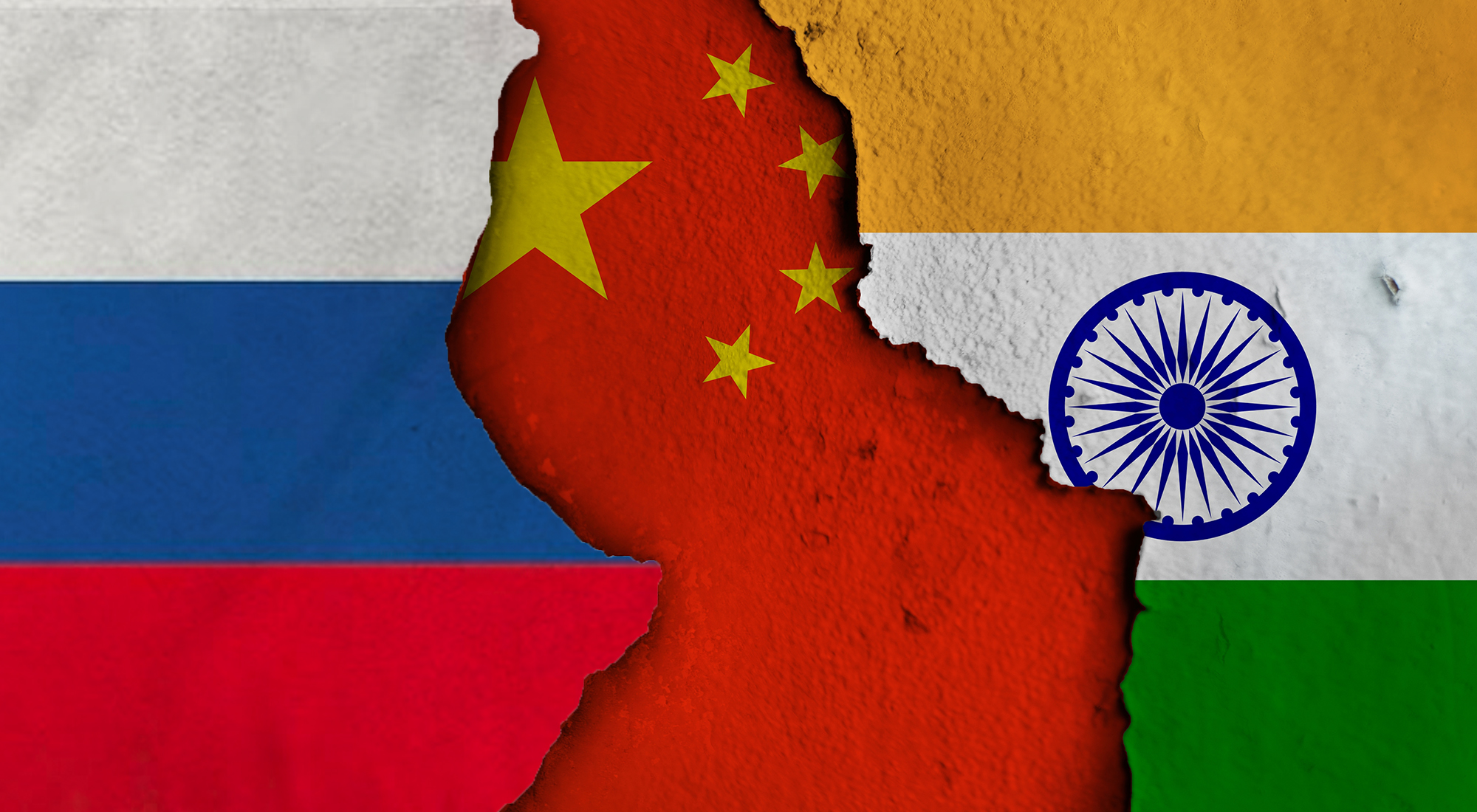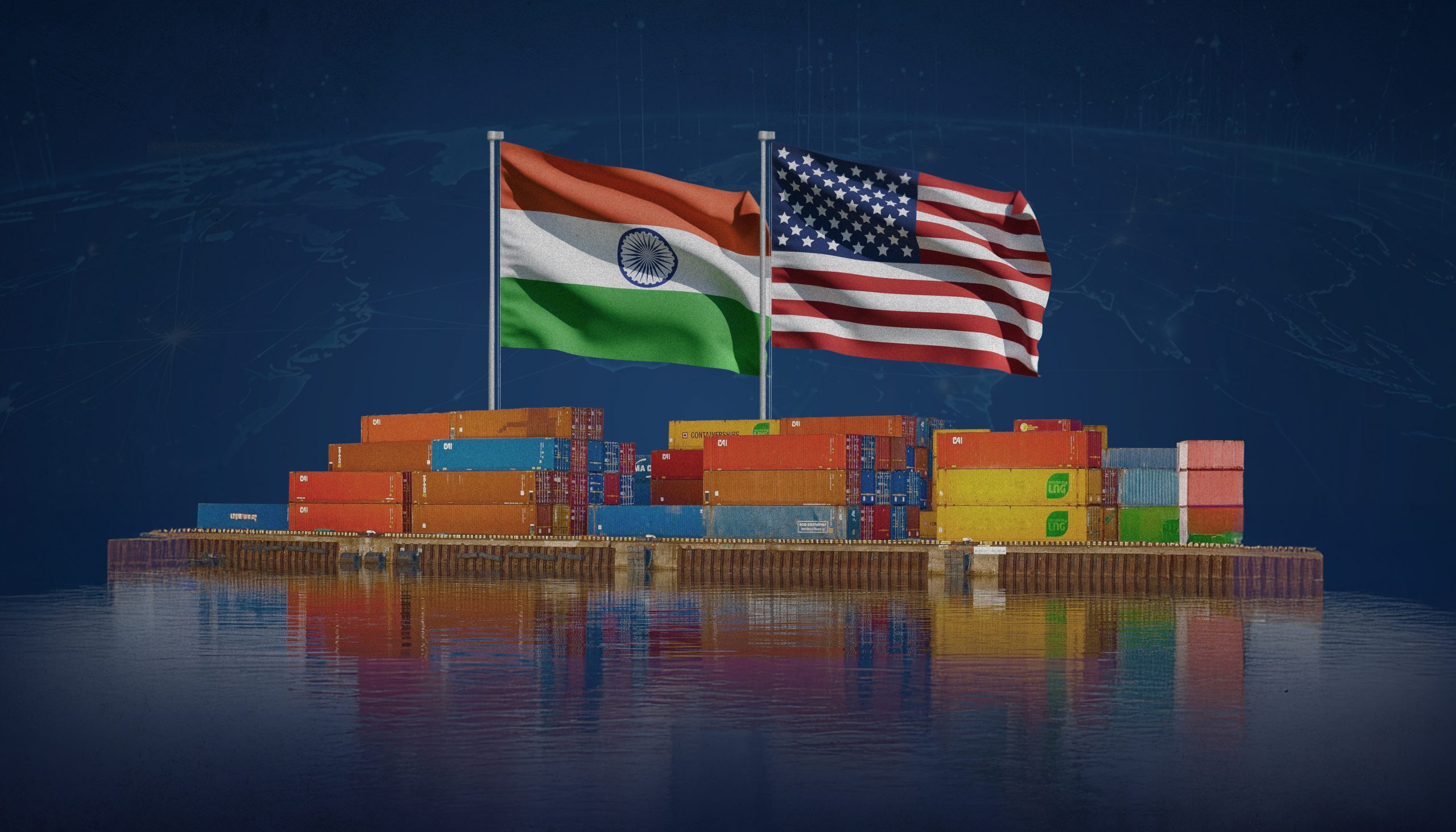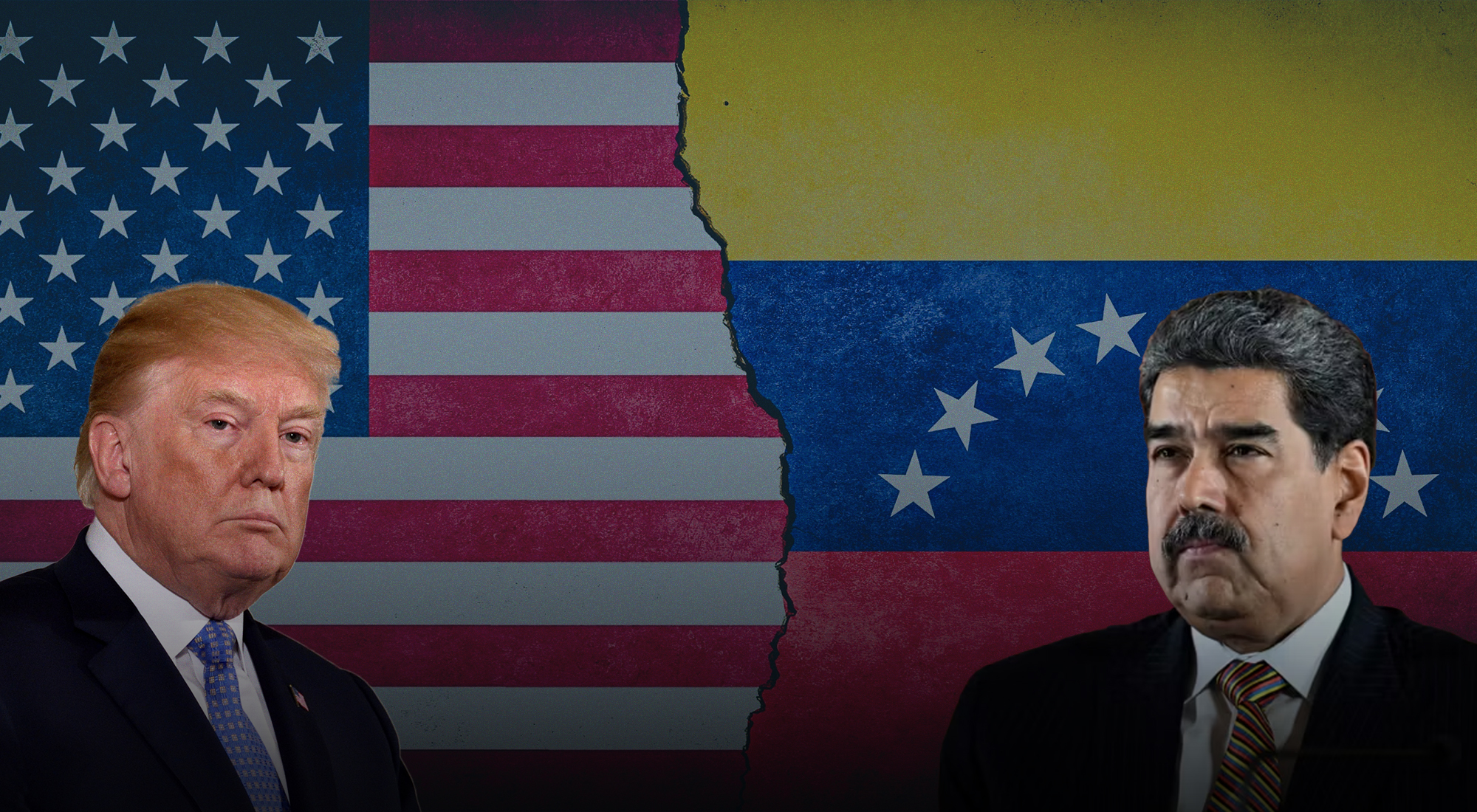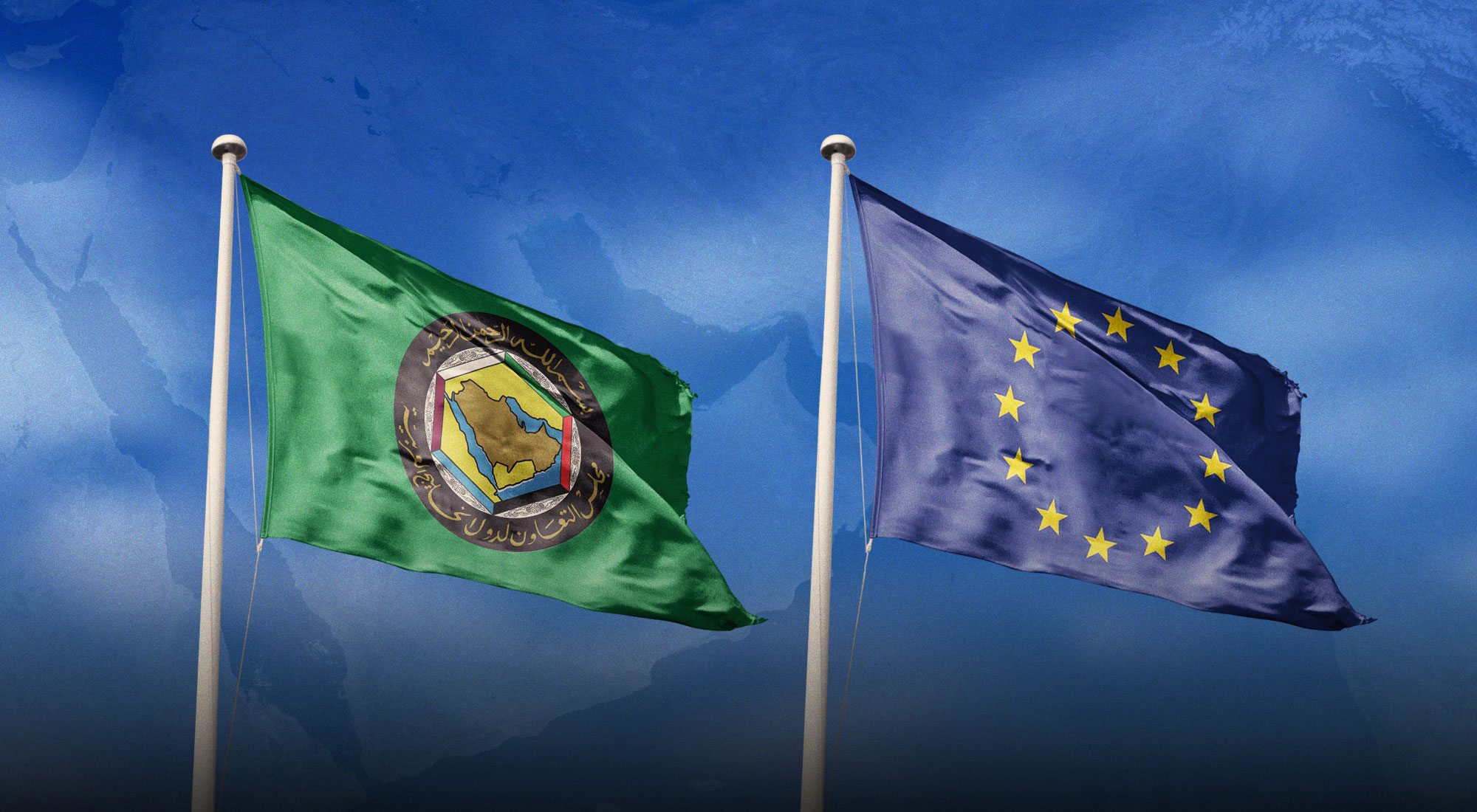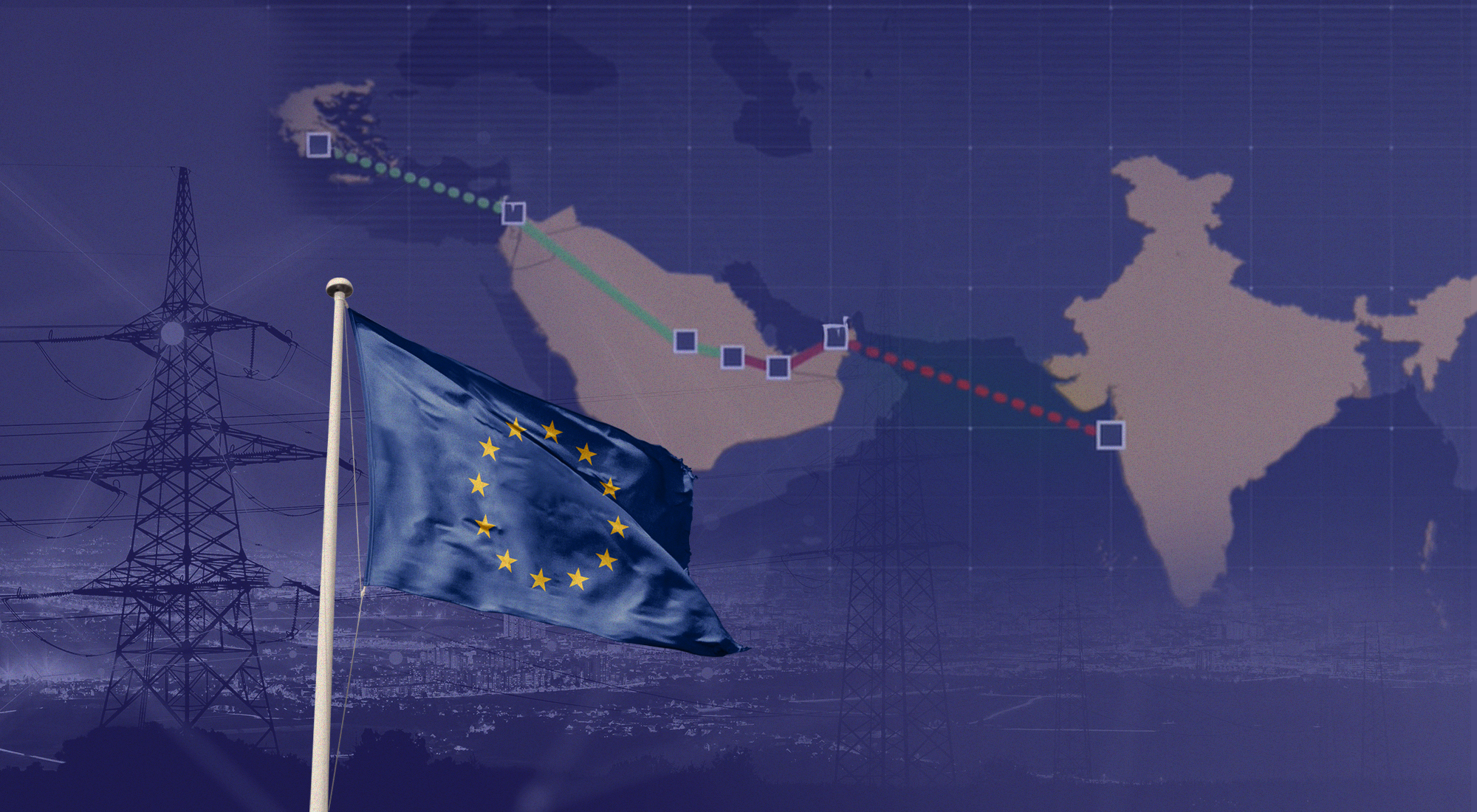It is possible that India’s ties with Russia will become a casualty of the Sino-Russian alliance if current trends continue. Despite the war with Ukraine and the Prigozhin mutiny in Russia in June 2023, it appears that in the military and technological spheres, Indian ties with the West and the U.S. are growing.[1] If this trend continues along with growing Sino-Indian rivalry on land and sea across Asia, in tandem with the deepening Russo-Chinese alliance, the already discernible Indian gravitation toward partnership with the U.S. and its Asian, if not European, allies will grow at the expense of India’s erstwhile ties with Russia. Indeed, Indian leaders are already “closely watching” Russia’s gravitation toward China and will do whatever they can to prevent or minimize a Sino-Russian axis inimical to its interests so that it can retain a meaningful space for a close partnership based on shared strategic interests, among them balancing Chinese power, rather than one based on inertia or merely a transactional relationship.[2] Nevertheless, it already appears from an analysis of regional trends in Central, South, and Southeast Asia and the Indian Ocean that this process has already begun.
Although on many issues Indian and Russian viewpoints overlap, it is increasingly the case that the bases for Indo-Russian partnership are the inertia of the years of Indo-Russian amity, oil and gas sales that have taken off in the wake of the war with Ukraine, and arms sales. The latter, in particular, have led to an Indian path dependence on Russian arms, which is nonetheless slowly being eroded by India’s diversification of the sources of military sales and technology transfer.[3] Indeed, this process of diversification has now been going on for at least twenty years.[4] Among the reasons for this diversification are the facts that Russian weapons are often failing to meet India’s requirements, also a trend discerned by the author already 20 years ago.[5] Moreover, Russia’s increasing requirements for fighting against Ukraine have already forced it to delay critical weapons promised to India like the S-400 air defense system.[6] The trends cited here thus call into question Russia’s ability to provide reliable strategic support for India against China.[7]
But what may prove to be decisive here is that Russia, despite numerous cases of China’s aggressive behavior against all its neighbors, not only India, is increasingly dependent on China.[8] Though that trend predates the war with Ukraine, this war has led French President Emmanuel Macron to warn about the “vassalization” of Russia vis-a-vis China and the Russians to concede that Moscow is becoming Beijing’s “junior partner”.[9] Moreover, Russian President Vladimir Putin apparently long ago accepted China’s rising position, having said that “the main struggle, which is now underway, is that for global leadership, and we are not going to contest China on this.”[10] As recent commentary points out, a Russia that is dependent on China is an unreliable partner for India.[11] It is already the case that Sino-Russian military-political support for North Korea and probes against South Korea and Japan have prompted those two countries to strengthen their mutual ties and their alliance with America.[12] So, if China’s continuing aggressive behavior in areas of critical and vital importance to India like the Indo-China border in the Himalayas, the Indian Ocean (including the South China Sea), and Central Asia worsens and Russia, of necessity, equivocates or retreats from its support of India, the process by which India has already strengthened ties with blocs like the Quad and America’s Asian allies and Australia will also intensify.
Increasingly, it appears that much, if not all, of Asia will be touched, if not more, by this Indo-Chinese rivalry and the parallel Sino-Russian alliance. It is already the case that long-running and earlier Russian ideas about holding the balance between India and China and bringing them into a tripartite structure with Russia have long since run aground.[13] Indeed, they may have been fanciful to begin with.[14] Furthermore, if an Asian realignment along these lines of heightened Chinese aggressiveness directed at least in part against India, where Russia brings up China’s rear, occurs, it will represent a shattering, maybe even a decisive, blow to Russian hopes of playing a significant role in Asia, i.e., the pivot to Asia that now supposedly is the main direction of its foreign policy. This becomes clear from Russia’s 2021 National Security Strategy, which repudiated Russia’s Western heritage and emphasized its ties with India and China.[15] That document emphasized the priority of an all-encompassing partnership and mutual strategic interaction with China and equally a special, privileged, strategic partnership with India that included reliable mechanisms that guaranteed regional security and stability throughout the Asia-Pacific region.[16] Furthermore, as the war in Ukraine now reaches 18 months in duration, China already views Russia as a weakened “junior partner” that cannot be allowed to lose the war in Ukraine.[17] Therefore, it is offering considerable covert support to Russia as documented by the U.S. government.[18]
Thus, as of 2021, Moscow evidently believed it could hold both these countries in balance and, with them, construct an Asia-Pacific regional security edifice as opposed to the U.S.-Japanese idea of an anti-Chinese bloc based on the concept of an Indo-Pacific region.[19] In turn, this meant that Indo-Chinese rivalries across Asia could be addressed politically and possibly resolved in ways that kept all three states in tune with the security principles addressed by Russia in its strategic statement and that presumably were shared by India and China.[20] However, even by 2021, that vision was already falling apart due to China’s “wolf warrior” diplomacy and overt pursuit of advantage over India by force in their border zone and in regionally contested areas like Central Asia. The war in Ukraine, China’s enhanced aggressiveness throughout Asia and especially against India, Chinese covert support for Russia in its war, and Western superior capabilities are all eroding the basis for the Indo-Russian entente. While India may not join a formal anti-Chinese alliance and sacrifice the principle of strategic autonomy that has been its lodestar since 1947, as analysts have warned for decades, it already is a member of the Quad and clearly feels China’s mounting strategic pressure in Central and South Asia, the border with China, and the Indian Ocean.[21] Thus an examination of inter-state dynamics in these areas should reveal a trend line that will force critical if unwelcome decisions for Indian strategists in the future.
Central and South Asia
These regional clashes with China are critical in understanding the pressures pulling India away from Russia in search of a more reliable partner. Alexander Korolev acutely observes:
India’s
threat assessments are driven by categorically different considerations. India
is less concerned with China’s alleged global ambitions and systemic challenges
to the West. Instead, for New Delhi, the most significant security threats from
China are all related to geopolitically proximate challenges “close to home”,
which dictates a different pattern of behavior towards China.[22]
Even though Central Asia is not a priority like Pakistan and the Sino-Indian border, we see here the same pattern of Chinese advances at the expense of Indian and even Russian interests and rhetoric aside, either a Russian passivity regarding these moves or an inability to challenge them that can only bode ill for India. A Fortiori in still more critical zones like South Asia generally and the border with China, the Chinese threat, seen from New Delhi, must loom much larger. Although much has been written about Sino-Russian relationships in Central Asia, the Sino-Indian rivalry is very real here. In Central Asia, the strategic competition among the great powers is most manifested in their ongoing struggle for points of lasting access to transport, infrastructure, and trade route projects. In these economic issues, we see evidence of China’s readiness to thwart Indian and even Russian objectives with apparent impunity. An excellent but little-known example of this rivalry already appeared in 2020. Already by then, the Indo-Iranian-Russian project to connect all three countries together through the International North-South Transport Corridor (INSTC) had begun to take off.[23] Within the framework of this project’s overall design, it is clear that the Iranian port of Chahbahar will play a major role as a central node of INSTC. As one recent assessment observes:
The
connectivity projects, including INSTC and Chahbahar, could be seen as the axis
of a wide range of Iran-India partnerships within the Greater Eurasia region.
Both countries can work on a roadmap of energy partnerships, as Iran claims to
be reliable and affordable energy source. This move significantly strengthens
Moscow’s hand in competition with China for dominance in Eurasia, the Middle
East, and Africa.[24]
Not surprisingly China moved with alacrity to obstruct INSTC. As I wrote in 2022:
Immediately after leaking these agreements (The Sino-Iranian treaty providing billions in investment and trade) Iran renounced a major deal with India, seemingly going it alone on building the $1 billion 628 km railway from Iran’s Chahbahar port to the city of Zahedan, located near Iran’s border with both Afghanistan and Pakistan (allegedly due to delays in Indian funding). The railway was intended to be part of a massive north-south trade route known as the International North-South Transport Corridor (INSTC), a multi-modal 7200-km trade and transportation corridor from Iran north to Central Asia and Afghanistan as well as Russia.[25]
Any road traversing Russia would supposedly enhance Russian leverage at the expense of Chinese leverage in Eurasia, and India would benefit thereby. This insight may also explain, at least in part, China’s interests in the Middle East and South Caucasus, along with its presence and policy in Central Asia.[26]
Although the original Indo-Iranian deal for Chahbahar has repeatedly been reaffirmed, this is merely one of an ongoing series of examples of Chinese-Indian rivalry over economic and political issues in Central Asia.[27] For example, at the latest Shanghai Cooperation Organization (SCO) summit in New Delhi, India refused to sign the document on members’ economic strategy to 2030. Most likely, this is because that document strengthens China’s position in the SCO and actively promotes Chinese initiatives like the BRI and probably the China-Pakistan Economic Corridor, both of which India regards as hostile anti-India initiatives.[28] These economic-political rivalries also reveal deeper tensions with both China and Russia.
Virtually every Russian and Chinese commentator extols the SCO and the BRICS as true harbingers of Moscow’s long-hoped-for multipolar order. However, as this example illustrates, such professions of faith exemplify wishful thinking or a desire to hide the truth. In fact, as the SCO example above shows, these organizations are vehicles for legitimizing great power decisions that benefit them more than other members. For instance, China has used the SCO as a vehicle for acquiring a dominant position in regional investments in a transition to a regional green economy, an acquisition that also entails political leadership over a faltering Russia.[29]
Moreover, the SCO is becoming increasingly problematic for New Delhi. While it looks strong, its internal contradictions, especially Russia’s overall decline, China’s rise, and the realization that Central Asia cannot rely nearly as much on Russian security guarantees or believe in its primacy there. Since India’s membership there derived from its assessment of Russia’s military primacy and support of India’s regional interests there, the basis of India’s position in the SCO, if not Central Asia as a whole, is eroding.[30] For example, Russian threats to Kazakhstan due to its refusal to support Moscow against Kyiv led China to guarantee Kazakhstan’s security openly, thereby curtailing Russian power. For Delhi, that was an ominous signal about waning Russian and ascending Chinese regional power in a critical region.[31]
We see a parallel trend toward great power dominance in the BRICS organization. Originally an economic institution, it has now become quite politicized as China and Russia are intent on dragging it into being a vehicle for an anti-American financial-political war under the rubric of de-dollarization.[32] As a recent report indicates:
The institutionalization of the BRICS – “Dreaming with the BRICs” – insofar as it had a basis in economic theory, was founded on the theory of absolute convergence, which has been consistently rejected by the data. The evidence pulled together here demonstrates that this is not a cohesive group in economic terms that might evolve into a convergence club with common interests… Rather, the recent political renaissance of the BRICS rests largely on what they are against – U.S. hegemony (including dollar hegemony).[33]
Likewise, de-dollarization does not work. As this report observed: “The Russia-India bilateral initiative to trade in own currencies never got off the ground because their bilateral trade was not balanced and Russia did not want excess rupees.”[34] One reason for this failure is Russia’s increasing dependence on China.
The Chinese yuan’s growing influence over the Russian ruble, and its potential to spill over to the rupee-ruble trade, had kept India worrying. As part of its newfound strategic relationship with China, Russia has been pushing for the yuan as its go-to currency for settling international trade payments, including those with India. Being China’s territorial and hegemonic adversary, India refused to settle payments in yuan to avoid exposing its volatile currency market to a highly regulated Chinese currency. However, Russia was able to transact in yuan with India on some occasions.[35]
Under the circumstances India is now wary of plans to increase the membership of the BRICS for it understands that adding new members will merely add for the most part clients seeking and depending upon Chinese investment and technology, not least Russia, too, to its detriment.[36]
Turning to South Asia, it is easy to observe Beijing’s long arm in action, as it historically has sought, first, to restrict Indian power to this subcontinent, and second, as its power has grown, to reduce Indian influence and replace it with its own presence. The long-standing Sino-Pakistani alliance has already physically and politically constrained India’s ability to influence trends in Afghanistan and Central Asia.[37] Analysts, if not officials, regularly depict Sino-Pakistani ties as a long-term effort aiming at encircling India. As one such assessment contends:
China has drawn on the Great Game playbook in
attempting to use infrastructure development and aggression to subdue India’s
budding prowess as a South Asian juggernaut. Notably, China has embarked on the
87 billion USD Chinese-Pakistani Economic Corridor (CPEC), aiming to upgrade
India’s rival’s infrastructure, and has undertaken military infrastructure
development in the Aksai Chin region. Two key motivations underlie China’s
militarization of the region. First, the LAC hinders Chinese-Pakistani
connectivity, with Ladakh obstructing a potentially enlarged Pakistani-Chinese
border. Second, the Aksai Chin region of China is home to the road connecting
Tibet and Xianjing, a strategic route for China. China’s power grabs in Central
and South Asia follow the pattern of Tsarist Russia’s during the Great Game.
Consequently, China hopes that expansionist infrastructure and heightened
militarization curb the perceived Indian threat.[38]
This kind of strategic thinking links together developments in Central Asia with trends in Pakistan and even on the Indo-Chinese border, the so-called Line of Actual Control (LAC) as part of a single overarching Chinese-led strategic plan. Many observers charge that China is slowly and gradually extending its territory into states neighboring it and India, e.g. Bhutan, in a way that resembles Russia’s ongoing “borderization” in Georgia.[39] Thus, the mounting signs of Russian energy deliveries and arms sales to Pakistan, probably under the influence of the Afghanistan question and Chinese urging, presage a Chinese-led shift in Russian policy from undeviating support for India to something rather different and unwelcome to India.[40] Indeed, Pakistan paid for its most recent discounted purchase of Russian oil with Chinese currency.[41]
The Indo-Chinese Border
This border has long been a potential, if not actual, flashpoint. And since 2020, when fighting broke out here, this area has become possibly the most visible and intense site of bilateral tensions. The number of episodes of fighting here since 2013 exceeds the total of incidents from 1962-2012, suggesting not just alterations in world politics and the impact of nationalist leaders in both countries but also China’s determination to put India in its place. As one recent paper illustrates, China’s aggressive tactics in the South China Sea parallel the attacks made by the PLA upon Indian positions in the LAC.
A Chinese military facility in Myanmar’s Coco Islands, close to India’s Andaman and Nicobar Islands, could, similarly, provide satellite intelligence, which poses a critical challenge. China’s objective is to encircle India with hostile countries, and its and their operational capabilities are inimical to India’s security interests. These countries are Pakistan, or others willing to align with China to put pressure on India. In the Indo-Pacific, the PLA’s force presence in Laos and Cambodia and a potential naval base in Cambodia offer Beijing a platform for intelligence gathering and expanded operational flexibility. In the South China Sea, China has fully militarized at least three islands with jamming systems, fighter jets, and anti-ship and anti-aircraft missile systems.[42]
Moreover, Russia has largely looked the other way in Southeast Asia and the South China Sea, not to mention the Indian Ocean, at Chinese aggressiveness.[43]
At present, the border issue is supposedly being negotiated and India’s Foreign Minister Subrahmanyam Jaishankar has stated that solving the border issue will be a lengthy process that requires ensuring “peace and tranquility” and desisting from acts of violence.[44] Undoubtedly, the current negotiation stems from a sense of urgency, having been delayed for over four months. This may be due to the G20 conference to be hosted by India in September.[45] But China’s history on the border and the fundamental thrust of its overall aggressive policies militate against it heeding Jaishankar’s words. China might pursue a detente given the upcoming G20 meetings in India and the APEC summit in the U.S. But while any relaxation of tensions would be beneficial, much more than that is needed to engender lasting detente.[46]
The Indian Ocean
We have already seen China’s practices in the South China Sea that are inimical to India’s interests and Russia’s passivity regarding Chinese probes. Even though Moscow aspires to play a greater role in the Indian Ocean, possibly to emulate China and India, its constrained and depleted resources and due to the war with Ukraine probably preclude its attainment of those objectives.[47] This leaves India on its own unless it affiliates with an alliance rivaling China, e.g., the Quad (U.S. Japan, India, and Australia) that aims to limit Chinese power projection into the Indian Ocean. China is nonetheless continuing to build bases for its navy in Cambodia, and Bangladesh’s Chinese-constructed naval base could house six submarines and eight warships even though its policy inclinations are currently undecided. China is also helping Pakistan build its navy in the direction of power projection and logistical support for that projection from Gwadar that can only serve to counter India’s similar ambitions in the Indian Ocean.[48]
So, despite many signs before the war in Ukraine of Russia’s interest in naval cooperation with India and Moscow’s heightened interest in maintaining a permanent deployment in the Indian Ocean, India must look to cooperation with members of the Quad and to its own resources here.[49] In other words, Russia’s inability to compete in the Indian Ocean with the other great powers represents another factor driving India to seek alternative security partnerships and arrangements in and regarding the Indian Ocean, where 120 foreign warships are already plying the waters.[50] In this context, India has also stepped up maritime and other forms of cooperation with Vietnam, championing Vietnamese naval modernization and Vietnam’s overall economic and trade developments.[51] Russia’s refusal to oppose China in the South China Sea and Indian Ocean thus greatly facilitates India’s search for new partners, not just the U.S. but also European, Australian, and Asian partners too.[52]
Conclusion
The foregoing analysis underscores the dramatic transformations occurring in international affairs generally and particularly in Asia, in this case around India. Yet much of the accelerating momentum of these changes stems from the revelations emerging from the Russo-Ukrainian war. India’s hosting of the upcoming G20 summit underscores both the trend line and the extent of these changes. Paradoxically, however, those transformations now oblige India to find new forms, patterns, and relationships to help it defend its widening and deepening security interests across Asia. Increasingly, the partnership with Russia is insufficient to the accomplishment of present Indian security tasks. Moreover, from what we now see occurring in Central Asia, South Asia, and the Indian Ocean region, Russia is ever more visibly unable to fulfill its self-proclaimed great power tasks here and throughout Asia more generally. That is, Russia’s pivot to Asia has failed decisively, leaving the field open to a host of contestants, including China and India. Given the dominance of rivalry in their historical relations, their future ties are unlikely to provide a solid basis for security in any of these regions. Therefore, the competition for influence throughout these zones and all of Asia will not only continue, but it will also be a multilateral rivalry well into the future.
[1] Clea Caulcutt, “France Aims To Lure
India From Its Main Arms Dealer: Russia,” Politico, November 25, 2022, https://tinyurl.com/24nmxkww.; Sameer P.Lalwani, “A Big Step Forward in U.S.-India
Defense Ties, June 6, 2023, https://tinyurl.com/y76tjdw2.
[2] Sumathi Bala,
“India’s Ties With Russia Remain Steady.
But Moscow’s Tighter Embrace Of China Makes It Wary,” May 3, 2023, https://tinyurl.com/yebs9ey3.
[3] Stephen Blank, Natural Allies?: Regional Security in
Asia and Prospects for Indo-American Strategic Cooperation, Carlisle Barracks, PA: Strategic Studies Institute, US
Army War College, 2005.
[4] Ibid.; Stephen Blank, “Arms Sales
and Technology Transfer in Indo-Israeli Relations,” Journal Of East Asian
Affairs 19, no. 1, 2005, pp. 200-241
[5] Ibid.
[6] Sumathi Bala,
op. cit.
[7] Ibid.
[8] Alexander Gabuev, “On
China’s Strategic Calculations After the Turmoil In Russia,” July 3, 2023, https://tinyurl.com/4n5c33fj.
[9] Ibid.; “Russia
Becoming A Vassal Of China Amid Ukraine War: Macron,” May 14, 2023, https://tinyurl.com/yy4kuuww.
[10] Ivan Krastev, “Robert Mueller Will Never
Get to the Bottom of Russia’s Meddling,” November 1, 2017, https://www.nytimes.com/2017/11/01/opinion/mueller-election-meddling-russia.html.
[11] Sumit Ganguly and Dinsha Mistree, “The Folly
Of India’s Neutrality, June 20, 2023, https://www.foreignaffairs.com/india/folly-indias-neutrality.
[12] Demetri Sevastopulo, Kana Inagaki, Christian
Davies, “US seeks to deepen Tokyo-Seoul security links to boost Pacific deterrence,
August 1, 2023, https://tinyurl.com/48969bn3.
[13] Stephen Blank, “Moscow’s Strategic
Triangle In a Time Of Transition,” Journal Of East Asian Affairs 22, no.
1, Spring/Summer, 2008, pp. 99-145
[14] Ibid.
[15] “National Security Strategy Of the Russian
Federation,” July 2, 2021, http://scrf.gov.ru/security/docs/document133/
[16] Ibid.
[17] Lee Ferran, “CIA No. 2: China Sees Russia As ‘Junior Partner,’ Likely
Alarmed By Wagner Uprising,” July 13, 2023, https://tinyurl.com/2bjps6bf.
[18] Office of the Director of National
Intelligence,” Support Provided by the People’s Republic of China to Russia,”
July 2023, https://tinyurl.com/mh4rkp8f.
[19] Igor Denisov, “What
Russia’s National Security Strategy Has to Say About Asia, July 14, 2021, https://tinyurl.com/ycxhvxur.
[20] “National Security Strategy of the Russian
Federation,” op. cit.
[21] Ashley J. Tellis, “America’s Bad Bet on India,” May 1, 2023, https://carnegieendowment.org/sada/89647.;
Blank, “Natural Allies” op. cit.
[22] Alexander
Korolev, China-Russia Strategic Ambitions in International Politics (Amsterdam:
Amsterdam University Press, 2022), p. 175
[23] Stephen Blank, ”INSTC: India Makes Its Move In Central Asia and
Beyond,” January 12, 2023, https://trendsresearch.org/insight/instc-india-makes-its-move-in-central-asia-and-beyond/,
[24] Fariborz Saremi, “Overcoming Geopolitical
Obstacles in Iran-India Relations,” August 3, 2023, https://tinyurl.com/4decbj9m.
[25] Stephen Blank, ”Sino-Iranian Relations and Their Impact on South
and Central Asia,” 2022, pp. 40-60, https://tinyurl.com/2vde6ura.
[26] Piotr Gawliczek and Khayal Iskandarov, “The
Zangezur Corridor As Part Of the Global Transport Route (Against the Backdrop
Of Power Games In the South Caucasus Region,” Security & Defense
Quarterly, 2023, https://tinyurl.com/3yf7w73b.
[27] Saremi; “India, Iran Plan To Route Russia
Trade Through Chahbahar Port,” www.livemint.com, July 17, 2023
[28] Daria Osinina, “SCO: New Borders – New
Tasks,” August 3, 2023, Valdai Discussion Club, https://tinyurl.com/39n7dx8a.
[29] Giovanni Agostinis and Francisco Urdinez,
“The Nexus Between Authoritarian and Environmental Regionalism: An Analysis Of
China’s Driving Role In the Shanghai Cooperation Organization,” Problems of
Post-Communism LXIX, 4-5, July-October, 2022, pp. 330-344
[30] “C. Raja Mohan Writes: SCO Meeting
Highlights China’s Growing Role In Inner Asia: India’s Challenge,” Indian
Express, April 25, 2023, https://tinyurl.com/3297jxnz.
[31] Ibid.
[32] Dan Ciuriak, “The BRICS As An Alternative
Anchor For Global Economic Governance: A Comment,” Discussion Paper, Ciuriak
Consulting, July 14, 2023.
[33] Ibid., p. 15
[34] Ibid., p. 13; K.A.
Dhananjay, “End of the Road for India and Russia’s Rupee-Ruble Trade?,” The
Diplomat, May 22, 2023, https://tinyurl.com/y48bh3zx.
[35] Ibid.
[36] “Explainer: India In Tightrope Walk As
Brazil, Russia, China Seek To Expand BRICS, BBC Monitoring, June 6, 2023
[37] Marlene Laruelle and Sebastien Peyrouse, Eds,
China and India in Central Asia: A
New “Great Game”, (New York and
London: Palgrave Macmillan, 2010).
[38] Dylan Yachyshen, “The China India Border Conflict,
The Great Game and a Sino–Indian Split,” September 15, 2020, https://tinyurl.com/yeyw3b9z.
[39]Natia Seskuria, “Russia’s Hybrid Aggression
Against Georgia: The Use Of Local and External Tools;” CSIS, September 21, 2021, https://tinyurl.com/82zdv5e6.; Robert Barnett, “China Is
Building Entire Villages In Another Country’s Territory,” Foreign Policy,
May 7, 2021,
[40] “Pakistan To
Make Special Arrangements For Long-Term Oil Supply From Russia,” BBC
Monitoring, July 13, 2023; Tom O’Connor, “As War and Terror Loom in Asia,
Pakistan Looks To U.S. and China For Help,” Newsweek, July 8, 2023, https://tinyurl.com/yc474rfy.; Vinay Kaura,
“Russia’s Deadly Embrace of Pakistan,” Begin-Sadat Center For Strategic
Studies, BESA Center Perspectives Papers No. 936, August 31, 2018, https://tinyurl.com/bdd6n65e.
[41] Grzegorz
Kuczynski, “Discounted Russian Oil Reaches Populous Pakistan, Warsaw Institute,
June 29, 2023, https://tinyurl.com/ythnx4vv.
[42]
Amit Dasgupta and Don McLain Gill, “Geopolitical Flux and the Future of
International Relations,” Institute for Security & Development Policy,
2023, p. 2, https://tinyurl.com/3xbsnacv.; Patrick
Winn,
“China Finalizing a Naval Base In
Cambodia,” August 7, 2023, https://theworld.org/media/2023-08-07/china-finalizing-naval-base-cambodia.
[43] Stephen Blank, “Paradoxes Abounding: Russia and the South
China Sea Issue,” Anders Corr, Ed., Great
Powers Grand Strategies: The New Game In the South China Sea, Annapolis,
MD. Naval Institute Press, 2018, pp. 248-272
[44] “Non-Alignment
Non-Negotiable,” www.theeconomist.com, June 17-23,
2023
[45] Amrita Nayak Dutta, Shubhajit Roy, “India& China To Hold Border
Talks Tomorrow Ahead Of Xi Talks,” August 13, 2023, www.indiaexpress.com.
[46] Rajeswari Pillai
Rajagopalan, “Should We. Expect a Thaw In China-India Relations Soon,?” August 4, 2023, www.thediplomat.com.
[47] Stephen Blank, “Russia’s Efforts
to Play in the Indian Ocean Basin”, https://newlinesinstitute.org/russia/russias-efforts-to-play-in-the-indian-ocean-basin,
June 17, 2021.
[48] Gaurav Sen,
“China Is Helping Modernize the Pakistan Navy.
What Does That Mean For India,?” July 22, 2023, www.thediplomat.com.
[49] Anurag Bisen, “India-Russia Cooperation in the Indian Ocean Region,
Arctic, and Russian Far East,” December 6, 2021, www.idsa.in.
[50] Ibid.
[51] Xuan Dung Phan, “Elevating
Indo-Vietnam Maritime Cooperation In the Indo-Pacific Theater,” https://southasianvoices.org/elevating-india-vietnam-maritime-cooperation-in-the-indo-pacific/, March 25, 2021; Huyinh Tam Sang,
“The Growing Importance of Vietnam to India’s
South China Sea Policy,” 2022, https://www.airuniversity.af.edu/JIPA/Display/Article/2980923/the-growing-importance-of-vietnam-to-indias-south-china-sea-policy/
[52] Ibid.



